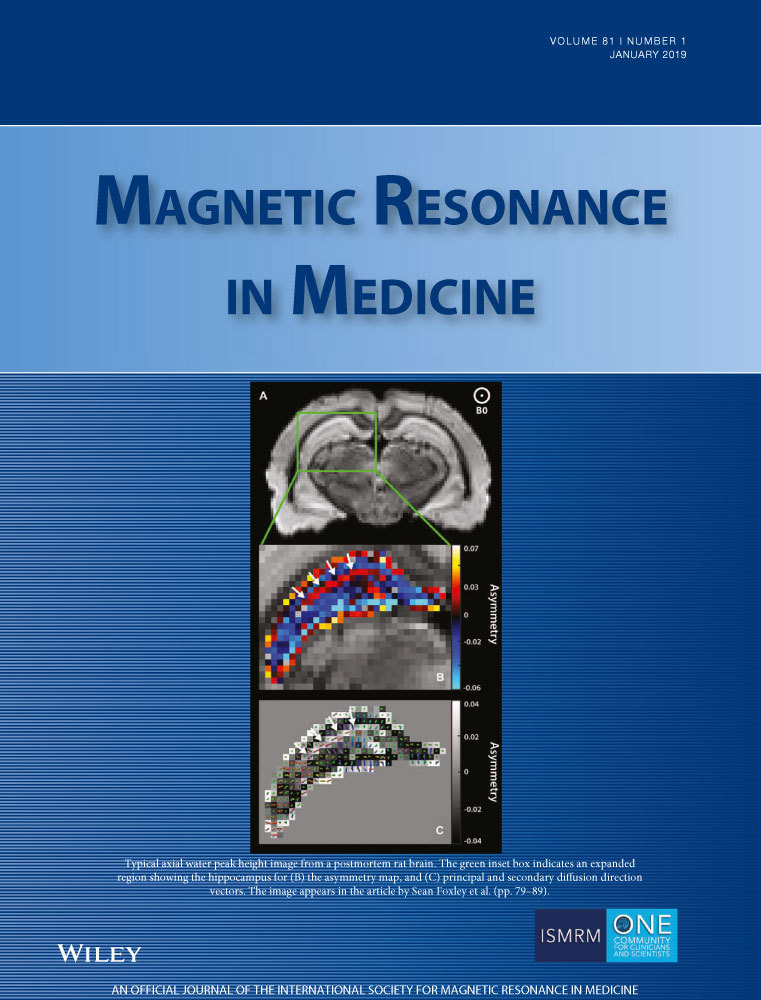Gradient-controlled local Larmor adjustment (GC-LOLA) for simultaneous multislice bSSFP imaging with improved banding behavior
Abstract
Purpose
Simultaneous multislice (SMS) accelerated balanced SSFP (bSSFP) imaging can be impaired by off-resonance effects, due to slice-specific alterations in the frequency response. In this work, we introduce gradient-controlled local Larmor adjustment as a means to restore the frequency response and to stabilize SMS-accelerated bSSFP imaging with respect to banding artifacts.
Methods
Providing each simultaneously excited slice with an individual RF phase cycle in SMS-accelerated bSSFP imaging results in the sequence's frequency response being shifted slice-specifically along the off-resonance axis. The net available pass-band for imaging is effectively reduced, increasing the measurement's susceptibility toward B0 inhomogeneities. To overcome these issues, gradient-controlled local Larmor adjustment modifies the Larmor frequency locally and aligns the slice-specific frequency responses on resonance by (1) unbalancing the slice gradient by a small constant amount and (2) modifying the RF phase cycles homogeneously across all slices. The concept is investigated using simulations and phantom experiments and applied to SMS-accelerated bSSFP cine cardiovascular MR at 3 T.
Results
Phantom and in vivo measurements demonstrate the successful removal of banding artifacts and restoration of the bSSFP frequency response using gradient-controlled local Larmor adjustment. For large slice thicknesses and small slice distances, banding artifacts become slightly widened.
Conclusion
Gradient-controlled local Larmor adjustment successfully restores the frequency response in SMS-accelerated bSSFP imaging without increasing the sequence's susceptibility toward eddy current effects. The concept facilitates combinations of the different SMS encoding concepts and provides a powerful way to actively control off-resonance effects in slice-accelerated bSSFP imaging.




